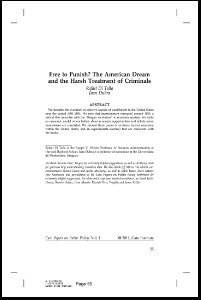By Ebony Ruhland , Edward E. Rhine , Jason Robey and Kelly Lyn Mitchell
The Robina Institute of Criminal Law and Criminal Justice launched a national survey of releasing authorities in March 2015 to each state, and the U.S. Parole Commission. The importance of the survey was underscored by an endorsement from the Association of Paroling Authorities International (APAI). We are pleased to present the results from this important survey here. This is the first comprehensive survey of parole boards completed in nearly ten years. Its findings provide a rich database for better understanding the policy and practice of paroling authorities. The last survey to be conducted of paroling authorities was in 2007 - 2008. The current report offers an expansion and update of previous surveys. The results summarized throughout the report offer a timely resource for paroling authorities, correctional policy-makers and practitioners, legislators, and those with a public policy interest in sentencing and criminal justice operations. It is our hope that the document and its findings provide key justice system and other stakeholders with an incisive snapshot of the work of paroling authorities across the country in a manner that contributes to a larger conversation about sound and effective parole release and revocation practices.
Minneapolis: Robina Institute of Criminal Law and Criminal Justice, 2016. 56p.





















